When shopping online, what factors influence your buying decision? Is it the price, the product description, or something else? One crucial factor often overlooked is trust. One effective way to build this trust is to incorporate trust badges into your website. These badges serve as visual cues that convey security, reliability, and credibility, addressing potential concerns and reassuring customers about their purchase decisions.
This article will explain why your website should use trust badges. Next, we’ll showcase 11 Important Trust Badges that can boost trust and conversion rates.
But before we dive into that, let’s clarify what trust badges are.
What are trust badges?
A trust badge is a symbol or small image displayed on a website that assures visitors their personal information is secure.
Because online purchases lack personal interaction, shoppers can’t assess trustworthiness through appearance or instinct. Instead, they need additional proof of safety, where trust badges are essential.
Trust badges often involve a third-party service that assesses a website’s security measures. While there might be a cost associated with these services, the investment can increase customer confidence and sales.
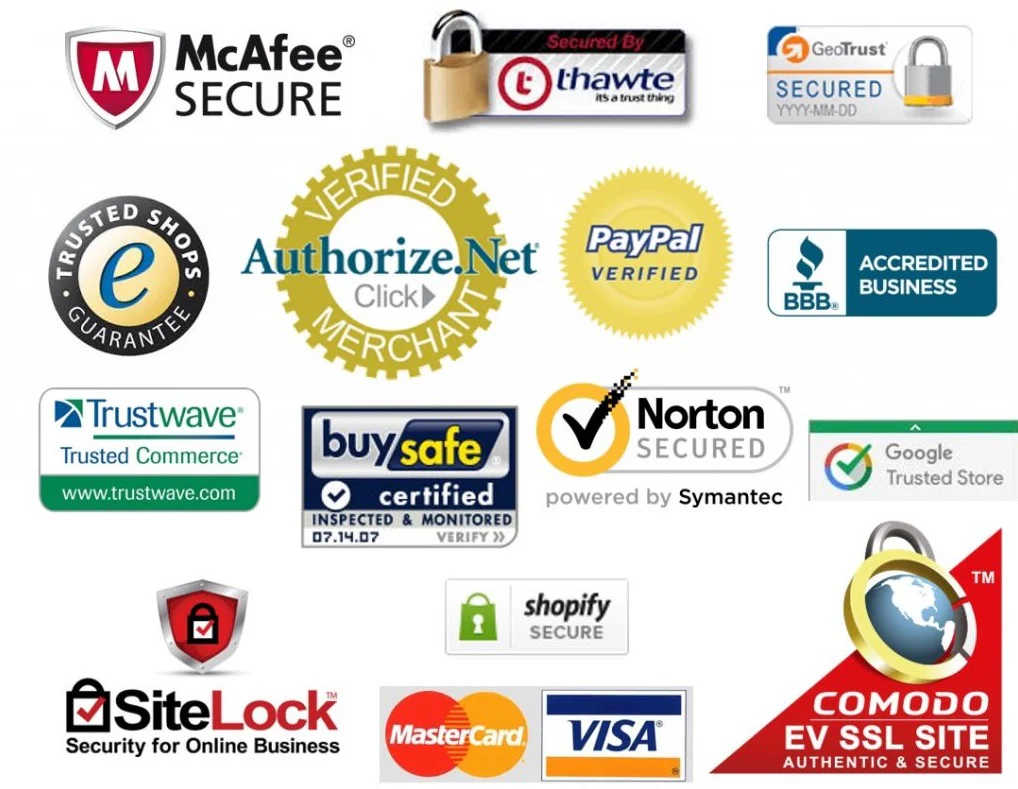
Why should your website use trust badges?
Using trust badges on your website can significantly improve customer loyalty and conversion rates. Here are the key reasons:
Builds Trust and Credibility: Trust badges, such as those from security providers, payment processors, or industry organizations, signal to visitors that your site is secure and trustworthy. This reassurance can reduce anxiety about making a purchase or sharing personal information. According to a study by Baymard Institute, 18% of users abandon a purchase due to security concerns, highlighting the importance of visible trust signals.
Increases Conversion Rates: By showcasing trust badges, you can help alleviate potential customers’ concerns and boost their confidence in your site, leading to higher conversion rates. People are more likely to complete a purchase if they feel confident about the safety of their transaction. Research shows that adding a trust badge can significantly improve the conversion rate by as much as 42%
Enhances Security Perception: Displaying security badges, like SSL certificates or anti-malware certifications, demonstrates that you prioritize data protection. This can make users more comfortable sharing sensitive information, such as payment details.
Reduces Cart Abandonment: 60% of customers abandoned their carts simply because there were no trust badges. So, trust badges can address concerns that might otherwise lead to cart abandonment. If customers see clear evidence of security and reliability, they are more likely to follow through with their purchase rather than abandon their cart.
Improves User Experience: Trust badges can simplify the decision-making process for visitors. By providing clear indications of trust and security, you help users feel more comfortable and confident, enhancing their overall experience on your site.
11 Important Trust Badges to Boost Your Store Credibility and Customer Trust
Trust badges are powerful tools that can significantly enhance your website’s credibility and encourage customer confidence. First of all, we’ll explore 7 essential trust badges:
1. SSL Trust Badge
An SSL Trust Badge is a digital emblem that websites display to reassure visitors that their personal and financial information is safe. It indicates that the website has a Secure Sockets Layer (SSL) certificate, a standard security protocol that encrypts data transmitted between the website and the user’s device.
This trust badge can significantly reduce cart abandonment and increase conversion rates, as customers feel more confident in making transactions. Additionally, search engines often favor sites with SSL encryption, which can improve the site’s search ranking and overall visibility.
How SSL Trust Badges Work:
When a user visits a website with an SSL certificate, their browser displays a padlock icon in the address bar and the URL starts with “https” (instead of “http”). This visual cue signals that the website is secure. Additionally, the SSL Trust Badge, usually a small graphic, is displayed prominently on the website.
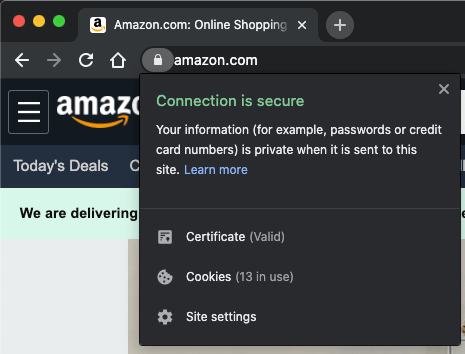
2. Secure Payment Badge
A Secure Payment Badge is a visual indicator on your website that assures customers their transactions are protected by robust security measures. This badge signifies that your payment processing system complies with industry standards for safeguarding sensitive information, including encryption and secure data handling
How Secure Payment Badge Work:
The Secure Payment Badge functions by representing compliance with stringent security measures like SSL (Secure Sockets Layer) encryption, which protects data during transmission. When customers see this badge, they know that their payment information is encrypted and processed through secure channels, minimizing the risk of data breaches and ensuring a safe shopping experience.
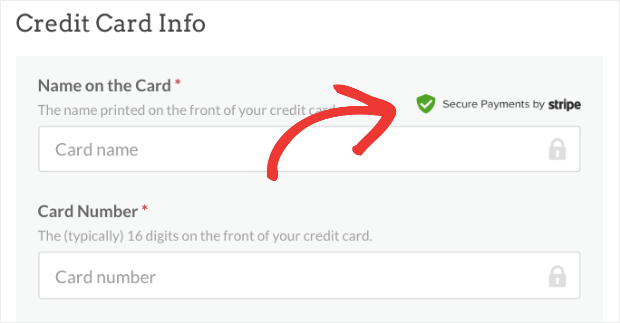
3. Accepted Payment Badges
Accepted payment badges signify to customers that your store supports secure and reliable payment methods. These badges often include logos from major payment gateways such as Visa, Mastercard, PayPal, and other trusted providers. By showcasing these recognizable symbols, e-commerce businesses signal their commitment to secure transactions and convenience, which can significantly reduce hesitation during checkout. These badges also help communicate that your store supports globally accepted payment methods, appealing to international customers and fostering trust across different markets.
How Accepted Payment Badges Work:
When a customer sees an accepted payment badge, they instantly recognize that their preferred payment method is available, which can remove friction during the buying process. These badges are typically linked to secure payment gateways, ensuring encrypted and safe transactions, boosting customer confidence, and reducing cart abandonment rates.
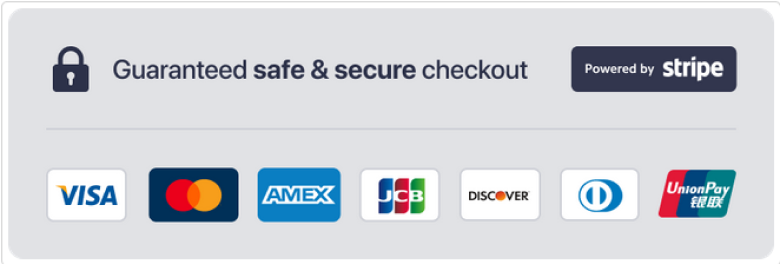
4. Review badges
Review badges display customer feedback by highlighting positive experiences and ratings. These badges reassure potential buyers by showcasing genuine reviews directly on product pages, fostering trust and influencing purchasing decisions.
How Review Badges Work:
Review badges work by aggregating customer reviews and displaying them in a condensed form, such as stars or snippets, directly on a website. They pull data from verified reviews and update automatically as new feedback is received, offering a real-time, credible snapshot of customer satisfaction

5. Free-shipping Trust Badges
Free-Shipping Trust Badge is a visual indicator on e-commerce sites that reassures customers they won’t incur shipping fees. Displaying this badge prominently can increase conversion rates, as it removes a common purchasing barrier. It conveys value, encourages impulse buys, and creates a seamless shopping experience.
How Free-shipping Trust Badges Work:
The Free-Shipping Trust Badge works by signaling to customers that shipping fees are waived, either universally or when certain conditions (such as a minimum order value) are met. This badge is most effective when displayed early in the shopping journey, motivating users to complete their purchases without worrying about unexpected costs at checkout.
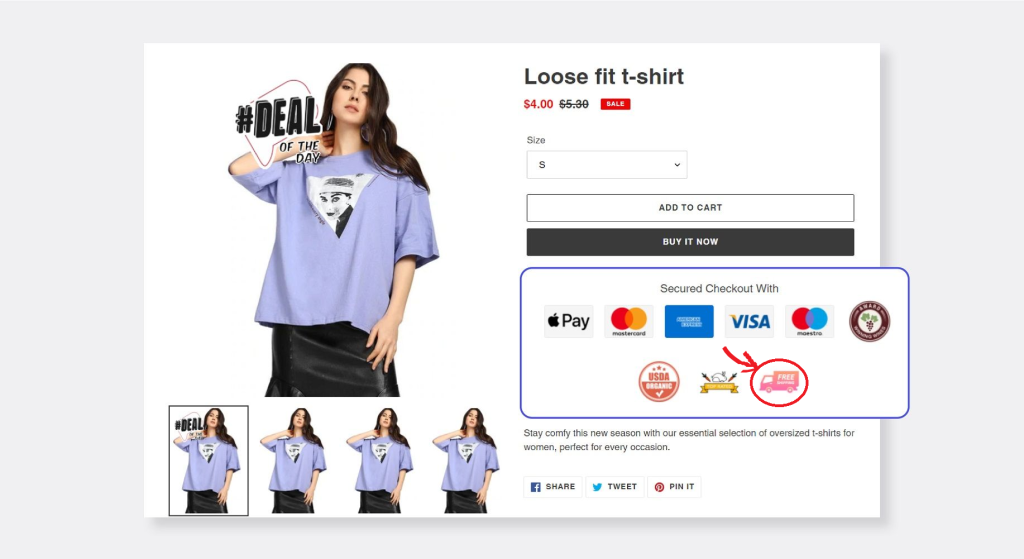
6. Return Trust Badges
A Returns Trust Badge assures customers of a hassle-free return process, which boosts their confidence in making a purchase. It informs buyers that they can easily return or exchange products, should they be unsatisfied, reducing the risk of purchase hesitation.
How Return Trust Badges Work:
A Returns Trust Badge typically links to a store’s return policy or provides a brief overview of return terms directly on the product or checkout page. It highlights important details like the time frame for returns, conditions for eligibility, and the process for initiating a return, thus removing ambiguity and building trust during the buying process.
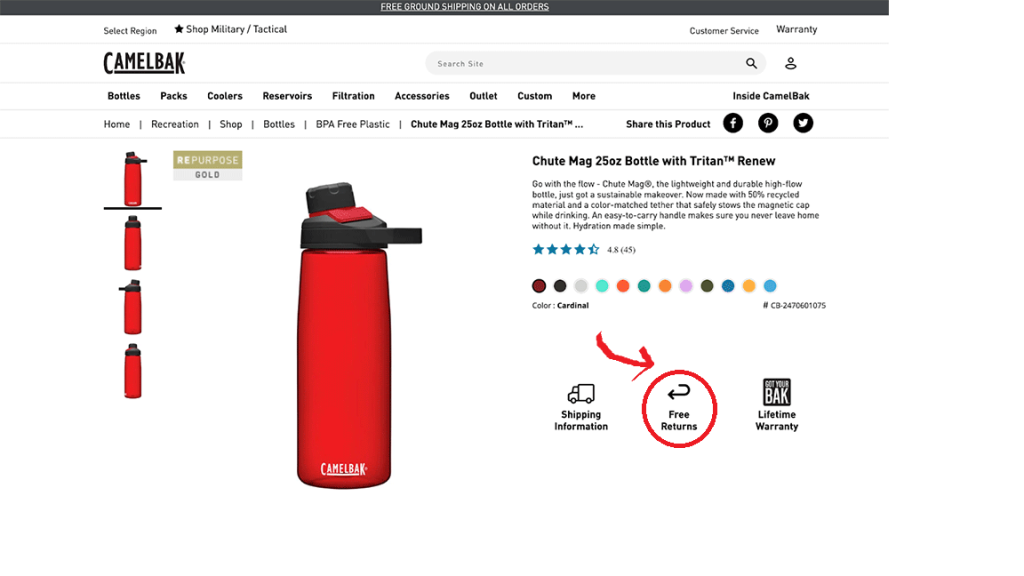
7. Money-Back Guarantee Trust Badges
Money-Back Guarantee Trust Badge assures customers that they can receive a full refund if they are unsatisfied with their purchase. This badge instills confidence, reducing buyer hesitation by minimizing the perceived risk of making a purchase.
How Money-Back Guarantee Trust Badges work:
The Money-Back Guarantee typically works by allowing customers to return products within a specified period, such as 30 or 60 days, for a full refund. The process usually involves contacting customer service, providing proof of purchase, and sending the product back. This hassle-free approach creates a risk-free shopping experience, helping to build customer loyalty and trust.

While the seven trust badges are effective and impactful, there are four trust badges that e-commerce sites should consider:
8. Customer Logo Trust Badges
Customer logo trust badges showcase the logos of well-known companies or brands that have used your products or services. By prominently displaying these logos on your site, you demonstrate that credible, reputable businesses trust your offerings, which can boost the confidence of new visitors.
How Customer Logo Trust Badges Work:
To implement customer logo trust badges, gather permission from your clients to use their logos, select high-quality images, and display them prominently on your homepage, checkout pages, or testimonials section. This strategy subtly but powerfully reinforces credibility by linking your brand to other successful businesses.

9. Industry Award Trust Badges
Industry Award Trust Badges signify recognition from reputable organizations within a specific industry. They showcase a business’s excellence, credibility, and leadership in its field, helping to build customer trust and differentiate the brand from competitors.
How Industry Award Trust Badges Work:
Industry awards are typically granted after a rigorous evaluation process by panels of experts or based on industry performance metrics. When a business wins an award, it is often allowed to display a trust badge on its website. These badges serve as a visual cue to customers, reassuring them that the business meets or exceeds industry standards.

10. Social Media Trust Badges
Social media trust badges indicate an online store’s presence and positive reputation on platforms like Facebook, Instagram, and Twitter. These badges often show follower counts or positive interactions, reinforcing the business’s credibility and transparency.
How Social Media Trust Badges Work:
Social media trust badges work by leveraging the psychological concept of social proof. When customers see that a brand has a strong following, verified profiles, or positive engagement, they are more likely to perceive the business as credible. These badges act as subtle signals that build trust and reduce hesitation during the buying process.

11. Free Trial Trust Badges
Free Trial Trust Badge assures potential customers that they can risk-free test your product or service. This badge builds trust by reducing the initial investment barrier, giving users the confidence to try your offering without financial commitment.
How Free Trial Trust Badges Work:
Free Trial Trust Badge informs potential buyers that they can access the full or limited version of a product or service for a set period, typically 7 to 30 days. During this time, the customer can evaluate the product’s performance and suitability to their needs without upfront costs, leading to higher conversion rates for paid plans or full purchases.

How to choose the best trust badge for your store?
When selecting trust badges for your online store, consider these factors to ensure they effectively enhance your credibility:
1. Relevance to Your Business:
Industry-Specific Badges: If your business is in a regulated industry (e.g., healthcare, finance), display badges from relevant associations or accrediting bodies.
Customer Service Awards: If you have excellent customer service, showcase badges from platforms like Trustpilot or Google Reviews.
2. Visual Appeal and Consistency:
Design Harmony: Choose badges with designs that complement your website’s overall aesthetic.
Consistent Placement: Place badges in prominent locations, such as near the checkout page or footer, for maximum visibility.
3. Customer Recognition:
Familiar Logos: Opt for badges featuring logos that customers are likely to recognize, such as well-known payment processors or security certifications.
Social Proof: Display badges that showcase positive customer reviews or social media engagement.
4. Badge Legitimacy:
Verification: Ensure that the badges you choose are legitimate and can be verified by customers.
Avoid Fake Badges: Be cautious of counterfeit or misleading badges that may harm your reputation.
5. Badge Maintenance:
Regular Updates: Keep your badges up-to-date to reflect any changes in your business or certifications.
Remove Outdated Badges: Remove outdated or irrelevant badges to avoid confusion.
By carefully considering these factors, you can select trust badges that effectively boost your store’s credibility and encourage customer confidence.
Free Trust Badges you can add to your eCommerce Site
E-commerce trust badges can be a powerful tool to boost customer confidence and increase sales. Let’s discover free trust badges you can add to your website:
- Shop Safe with VeriSign: This badge shows that your site is secure and has been verified by VeriSign, a leading provider of internet security services.
- Norton Shopping Guarantee: This badge shows that your site is protected by Norton Shopping Guarantee, which offers buyers protection against unauthorized charges and item non-receipt.
- BBB Accredited Business: This badge indicates that your business is accredited by the Better Business Bureau (BBB), a non-profit organization that promotes ethical business practices.
- Trustify Reviews: Trustify is a popular review platform where customers can share their experiences. Once you integrate Trustify app into your site, you can display their star ratings and reviews.
- Google Trusted Stores: This badge shows that Google verifies your store and that you have a strong track record of customer satisfaction. To get this badge, you need to meet Google’s requirements for customer service and order fulfillment.
To add these badges to your website, you’ll typically need to sign up for the relevant program and follow the instructions provided. Once you’ve added the badges to your site, be sure to promote them on your homepage, product pages, and checkout page.
Questions & Answers about Trust Badges
1. How often should I update trust badges on my site?
Trust badges should be updated regularly to reflect changes in your business practices, certifications, or industry standards. For example, if you upgrade your security protocols or revise your return policy, update the relevant badges accordingly. Regular updates help maintain credibility and ensure that customers have accurate information about your store.
2. Are free trust badges as effective as paid ones?
Free trust badges can be effective if they come from reputable sources and accurately reflect your site’s security and policies. However, paid badges from well-known organizations or certification authorities may offer additional credibility and recognition. It’s important to choose badges that best align with your business needs and customer expectations.
3. How can I measure the effectiveness of trust badges on my site?
To measure the effectiveness of trust badges, and track key performance metrics such as conversion rates, cart abandonment rates, and customer feedback. Use A/B testing to experiment with different badges and placements to see which ones have the most positive impact. Analyzing these metrics can help you determine which badges resonate most with your audience and drive better results.
WRAP UP
Trust badges are crucial for enhancing online credibility and fostering customer trust in e-commerce. By prominently displaying security certifications, payment guarantees, and industry recognitions,… trust badges reassure customers about the safety and reliability of their transactions. These visual endorsements help mitigate concerns, reduce purchase anxiety, and can significantly boost conversion rates. In an increasingly competitive online marketplace, effectively leveraging trust badges can be a key differentiator in establishing a reputable and trustworthy brand presence.